The question ‘Which platform is the best content distribution platform?’ is a tricky one, because the answer depends on your particular content marketing goals.
Every company has different goals, different target groups, and different decision makers and this ultimately shapes the choice of platform they make. For instance, depending on budget, they might decide to use low-cost or free distribution channels. As a new company grows, it might decide to shift to higher-cost channels.

But is such a shift necessary? As your company tests out different content distribution platforms, you have to ask yourself the following questions:
- Can free distribution channels give you everything you need for your content distribution strategy to succeed?
- Are there advantages to using certain channels over others?
- How do different paid channels compare and which one should you choose?
- What do you want content distribution platforms to accomplish for you?
- Are you trying to generate more revenue or are you just trying to get more people to see your content?
- And most importantly, is it even relevant to your company in the first place and what is content distribution anyway?
These and other questions are explored in greater detail below.
Why content owners pay to distribute their content. Do paid platforms give good ROI?
The amount of content published online on a daily basis is staggering. Add this to the dwindling attention span of internet visitors and you can see what a difficult task it is for one piece of content to stand out.
Marketers who do not use paid content distribution platforms have to invest a lot of time and effort to get their content noticed and hopefully get shared.
Paid content distribution platforms enable content owners to overcome this hurdle as they guarantee that content will get to the right audience, attract high traffic, result in quality leads and conversions, and increase subscriber base. This is the main justification for paying for content distribution.
The ROI justifies this spend, as discussed in the comparison of different paid distribution platforms below.
Popular paid content distribution channels
Time to look at some popular paid content distribution channels: who uses them, what do they cost and what are their upsides and downsides?
Content recommendation engines
A first category of popular paid content distribution channels are so-called content recommendation engines or content discovery tools, often overlapping with native advertising.
The 2016 edition of the B2B content marketing benchmarks North America found that 14 percent of B2B marketers use such content discovery tools to (pay to) distribute/promote their content. Native advertising is used by 39 percent. Below are a few players.
Taboola
Tests conducted by Seer Interactive, revealed that Taboola tends to have higher bounce rates than Outbrain, but given the right niche, Taboola can prove to be very effective at delivering content to your target audience.
 The fact that Taboola has a long-time commitment to video content distribution gives it an advantage over other platforms. Taboola’s dashboard allows you to target different countries and geographies and also define whether your ad is targeted for tablet or phone. Seer also concluded that Taboola is less expensive, more scalable, and able to attract more traffic for the same budget as Outbrain.
The fact that Taboola has a long-time commitment to video content distribution gives it an advantage over other platforms. Taboola’s dashboard allows you to target different countries and geographies and also define whether your ad is targeted for tablet or phone. Seer also concluded that Taboola is less expensive, more scalable, and able to attract more traffic for the same budget as Outbrain.
Outbrain
The downside of Outbrain is that you will get fewer visitors to your media, for the same price you pay to a service like Taboola.
 However, unlike Taboola, Outbrain has a higher engagement and conversion rates. The admin dashboard doesn’t support large sets of data, which can result in a lot of time spent on analytics.
However, unlike Taboola, Outbrain has a higher engagement and conversion rates. The admin dashboard doesn’t support large sets of data, which can result in a lot of time spent on analytics.
Adblade
Adblade is a popular platform with publishers like Answers.com, Forbes, and Bloomberg.
 When paying for the service by credit card, there are no minimum monthly spend requirements.
When paying for the service by credit card, there are no minimum monthly spend requirements.
Unlike other content distribution networks that use algorithms to target audiences, Adblade targets audiences based on interest, and also allows retargeting.
Zemanta
Zemanta uses platforms like Outbrain, Gravity, Adblade and Disqus to promote your content, which they will first aggregate.
 This model may work for some content owners but if you prefer to have more control over your campaigns, you might not favor this approach.
This model may work for some content owners but if you prefer to have more control over your campaigns, you might not favor this approach.
Nativo
A key differentiator of native advertising platform Nativo is that rather than paying for CPC, you pay for Viewable CPM (vCPM).
 Thus, you are assured you are paying for viewers. Cost of Viewable CPM varies between $10 to $18. According to Nativo, they are capable of improving performance of native ads by over 300%.
Thus, you are assured you are paying for viewers. Cost of Viewable CPM varies between $10 to $18. According to Nativo, they are capable of improving performance of native ads by over 300%.
Paid content distribution via social channels and networks
A very often used way to distribute content in a paid way is using social platforms and networks. Social ads are used by 51 percent of B2B marketers as a paid advertising method for content distribution and promoting and this excludes (paying) promoted posts such as promoted tweets.
Facebook Ads
The biggest advantage of using Facebook for advertising is that individuals and businesses rely on it for interacting and discovering content, thus making it a prime channel for B2B and B2C advertisers.
Facebook’s advertising platform has different types of ads, such as the page post Link ads, to suit different advertisers’ needs. These ads, once clicked on, link back to a website.
Advertisers can also A/B test their ads to find out what works best for conversions. Facebook ads have amazing targeting capabilities, allowing advertisers to target audiences based on interests, behavior, demographics, or whether they are or aren’t connected to your pages.
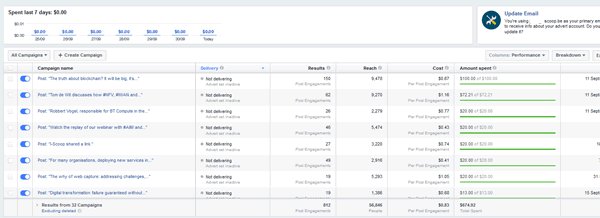
The cost of Facebook advertising will depend on how much you are willing to spend. The time of year, the quality of the advertisement, and your target audience will all impact the final cost. This makes it affordable for people with both small and big budgets. You can bid for cost per click, per action, impression, like, conversion or other parameters, depending on your goals.
YouTube
When designing a video content distribution plan, there are two tactics you can use:
- You can host the videos on your owned media, using players like Vimeo (which has just launched a business edition of its platform).
- Or you can promote your content on platforms like YouTube.
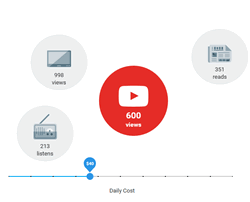
As far as video content delivery goes, YouTube is a must-use for any brand that is serious about gaining a large following for their content.
Other social media platforms such as LinkedIn, Facebook, and even Twitter can boost your video distribution efforts.
YouTube also has a paid advertising platform.
There are three ways in which you can promote your content on LinkedIn:
- By displaying sponsored content on an advertising network. When clicked on, the update will lead to your website.
- You can feature your text and Image ads prominently on the LinkedIn website.
- You can target audiences with content through Inmail.
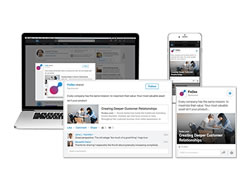
LinkedIn is ranked as the most effective social media advertising platform with 66% effectiveness according to content marketing institute – ahead of Twitter, Facebook and YouTube.
LinkedIn also generates more leads for B2B than any other platform. Its targeting abilities outweigh those of any other platform, as it goes beyond demographics to include parameters such as job title, company, and other job-specific details. Costs can either be cost per click (CPC) or cost per 1000 impressions (CPM).
If you have never considered paying to promote your content on Twitter, you might want to start.
The 2016 edition of the B2B content marketing benchmarks North America found that promoted posts, including promoted tweets, rank fourth on the list of most used paid advertising methods to promote and distribute content in B2B.
When you want to reach wider audiences or if you want to drive higher engagement with your content, promoted tweets are an effective way to achieve this objective. At a glance, promoted tweets look just like ordinary tweets, but a closer look reveals the word ‘promoted’ on the bottom left-hand corner of a tweet.
You can retweet, like, reply to, or perform other such actions on promoted tweets. Payment for promoted tweets depends on the action you want your audiences to take, such as clicking, following, subscribing, etcetera.
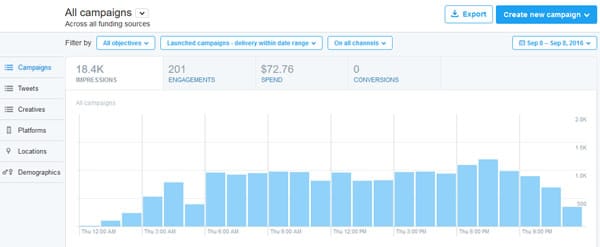
Paid search engine marketing
Google, as the leading search engine, is almost a category of its own, althoug others also offer paid search ads. According to the 2016 B2B content marketing benchmark report of the Content Marketing Institute, a majority of B2B advertisers use paid search engine marketing for promoting/distributing their content.
Ads on the most used platform, Google AdWords, are easy to create and automatically display to anyone searching for keywords that you have specified. For this reason, a majority of marketers find Google advertising an effective tool for reaching audiences.
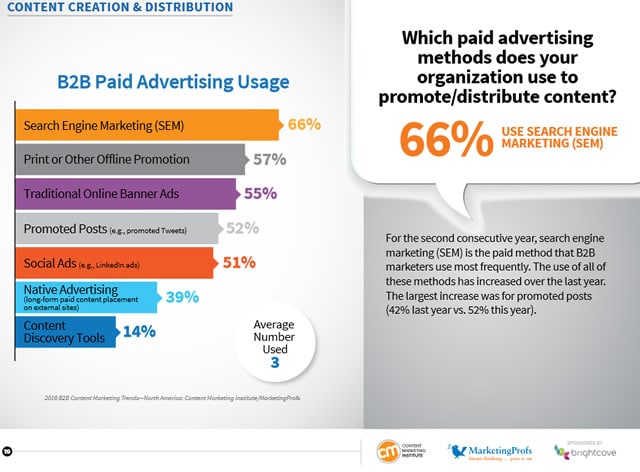
Google AdWords targets audiences based on the keywords they normally use when performing searches. With the data you collect through Google Analytics, you can improve your keyword targeting and content in the future. Make use of analytics for your strategies.
The cost of advertising depends on the keywords you choose to use but that’s another story and brings us to search engine marketing and, more specifically search engine advertising (the non-paying form of search engine marketing being search engine optimization).
So what next for your brand? Crafting a content distribution plan
The content distribution platforms discussed above are just the tip of the iceberg.
To learn about other free and paid platforms, you can check out this article: 40 best content distribution tools that will give your content the widest reach, where I dive deep into 40 content distribution tools.
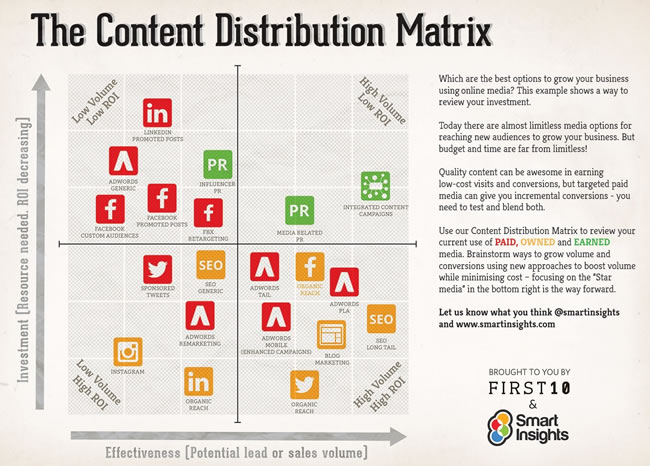
As you craft your content distribution plan, take note of these points:
Paid distribution is not your main focus; owned media is.
Free media distribution can work, but only to a certain extent. To maximize your efforts, you need to pay to distribute. It’s always a mix of paid, owned and earned.
There is however, danger in making large investments in platforms like Facebook that allow you to rent audiences instead of owning them. In order to own audiences and have total control, you have to invest wisely. Think of paid platforms for content delivery as tools for building your owned media because once your brand is strong, you might not need to pay-to-distribute at all. For instance, brands like Kraft and Red Bull have mastered the science of aggregating subscribers to a point where they no longer need to use paid media.
In a nutshell, as you invest in paid media to distribute your content, your main objective should be to convert audiences you pay for to audiences you can own in the future. Call-to-actions that get audiences to subscribe are a sure way of getting audiences onto platforms where you have full control.
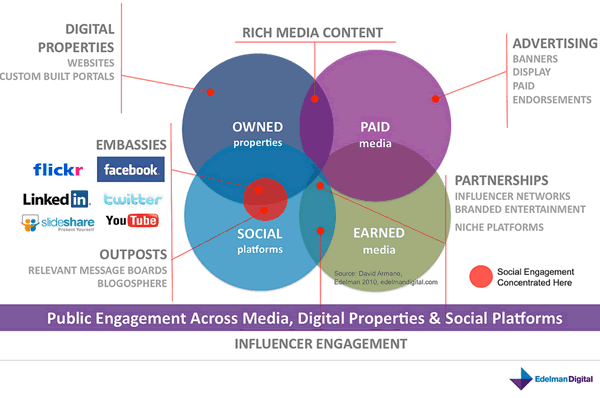
Even after you convert audiences into subscribers, you have to constantly engage them by publishing content that they need and want. Building such a formidable brand takes time, but as long as you focus on using your paid media to consistently push people to your owned media, you are on the right track.
Tap into the power of social media
There’s a lot of information out there calling for brands to drive traffic through social media.
In fact, in 2012, Simple reach predicted that by 2015, social would be responsible for driving 53% of traffic, up from the 25% experienced that year. If you look at the numbers reported in current research, these predictions were not unfounded.
Most people discover their content through social media, making it a key platform that content publishers need to target for growing audiences.
Optimize your content
Distribution platforms are in high demand by brands, all of which are keen to get their content discovered.
This means that there are millions of content pieces being published on a daily basis, a factor that could make it very difficult for your content to be found. What’s more, the average viewer spares only a few seconds per content piece.
This means that merely paying for content distribution is not enough but you must instead be armed with a content distribution strategy that constantly optimizes content to make it easily discoverable. Content distribution is about winning audiences and only by optimizing your paid platforms can you win audiences.
Be smart; protect your brand image
There’s a great rush to leverage content distribution platforms as brands try to outdo each other and it’s natural to get caught in this rush.
But doing so could ruin your brand image if your content ads are displayed on pages that carry non-related content.
Relevant content is still the best way to avoid this, as is distributing your content within a relevant context. Irrelevant “native ads” on a page appear spammy and as a recent study conducted by ChartBeat shows, fewer and fewer people are clicking on native ads and are instead focusing on the main page content.
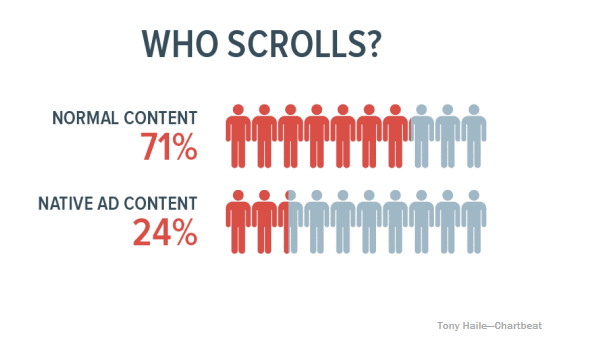
Therefore, as you invest in paid content distribution, do so with the following in mind:
- Your content should be relevant to the network it’s being displayed on.
- Avoid spammy headlines.
- If you use images, they should be relevant to your content.
- Your content should drive back to the actual page promised by the ad.
- It should be clear that content is sponsored. Viewers dislike feeling cheated; they’d rather know beforehand that they are clicking on sponsored content.
Finally, work with a budget that allows you to test different digital content distribution platforms.
Only by testing will you know what you can accomplish with different platforms. Though market share is a good indicator (and hence will lead to choices like Taboola, Facebook, LinkedIn and Outbrain), focus on the actual conversions you are getting from the platform. Are you satisfied with their quality and can you build up from there?
Top image: Shutterstock – Copyright: agsandrew – Silo image: Shutterstock – Copyright: Gonzalo Aragon
All other images are the property of their respective mentioned owners.

